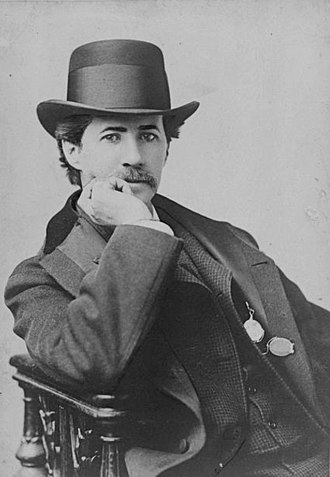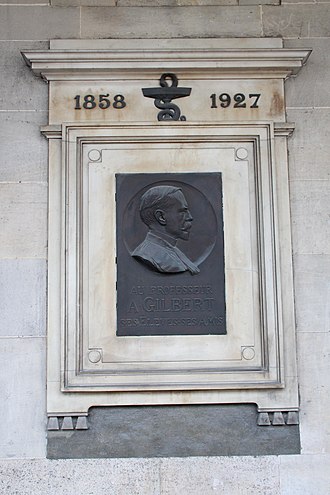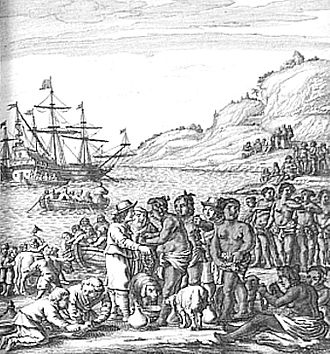Discover Your Roots
SIGN UPDiscover Your Roots
SIGN UPAugustin is a male name of French origin that exudes greatness. The name Augustin is derived from the Latin name Augustinus, which means "Great" or "Venerable." It is a name that carries a sense of strength, significance, and grandeur. In addition to its meaning, Augustin has been used as a name for various cultural references, including a French film and a popular Viennese song. The name has also been associated with historical sites and landmarks, such as the Dacian fortress of Augustin in Romania and the Palace of Augustin in Spain. Augustin is a name that resonates with power and distinction, making it a strong choice for parents seeking a name with a profound and impactful meaning for their son.

Augustin Daly (July 20, 1838 – June 7, 1899) was a prominent figure in American theater history, known for his multifaceted contributions as a drama critic, theatre manager, playwright, and adapter. Hailing from Plymouth, North Carolina, Daly's impact on American theater was substantial, as he became the first recognized stage director in the country. Renowned for his fierce control over productions, he established strict rules for actors and actresses, earning him the moniker "the autocrat of the stage." Daly's influence extended to the establishment of permanent theater companies in both New York and London, with Daly's Theatre in New York opening in 1879, followed by a London counterpart in 1893. Notable for his company of talented actors, Daly's work notably propelled the careers of numerous renowned artists, including Clara Morris, John Drew, Jr., Maurice Barrymore, and Maude Adams, among others. His literary contributions included successful plays such as "Under the Gaslight" and "A Flash of Lightning." Despite facing criticism for his unorthodox Shakespearean productions, Daly's impact on American theater is undeniable, leaving a lasting legacy in the industry.

Augustin Duncan (April 17, 1873 – 1954) was a prominent American actor and director whose career spanned the first half of the 20th century in New York and London. Born as the eldest son of Joseph Charles Duncan and Mary Isadora Gray, he was part of a talented family that included renowned figures like Isadora Duncan, Raymond Duncan, and Elizabeth Duncan. Duncan's theatrical journey commenced in 1893 in San Francisco and took him through a seven-year tour before he landed in New York in 1900. His versatility was showcased in various performances and directorial endeavors, notably with the Theatre Guild in 1919. Despite facing challenges with failing eyesight in the late 1920s, Duncan persevered and continued to contribute to the stage. His legacy extended beyond his own career, as evidenced by his marriage to Broadway actress Margherita Sargent and their son Angus, who became the Executive Director of Actors' Equity Association. Duncan's impactful presence in the theater world remains an enduring testament to his passion and dedication to the craft.Source:Augustin Duncan, The Oxford Companion to American Theatre, by Gerald Bordman and Thomas H. Hischak, Oxford University Press, 2004. ISBN 978-0-19-516986-7

Augustin Nicolas Gilbert (1858–1927) was a distinguished French physician known for his significant contributions to the field of medicine. Born in Buzancy, Ardennes, he obtained his doctorate from the University of Paris and went on to serve as an intern at the prestigious Hôtel-Dieu de Paris. Gilbert later became a renowned professor of therapeutics and clinical medicine at Hôtel-Dieu, and in 1907, he gained membership to the esteemed Académie de Médecine. Throughout his career, he authored numerous articles and books covering a wide range of medical topics. Collaborating with notable figures such as Jean Alfred Fournier and Paul Brouardel, Gilbert co-published several influential works, including the multi-volume "Traité de médecine et de Thérapeutique." His extensive research on portal hypertension alongside neurologist Maurice Villaret yielded valuable insights. Notably, Gilbert's identification of a hereditary cause of increased bilirubin led to the recognition of Gilbert's syndrome, a disorder attributed to a deficiency of the enzyme glucuronosyltransferase. His remarkable legacy continues to inspire and inform the medical community to this day.

Augustin Royer, a renowned French architect during the era of Louis XIV, made significant contributions to the field of astronomy. In 1679, he published a star map that included the 48 constellations of Ptolemy and the additions of other astronomers and cartographers. Notably, Royer included two constellations of his own creation to honor his patron, Louis XIV: Lilium, representing the emblem of France, and Sceptrum et Manus Iustitiae, depicting regal symbols. While these constellations did not survive in the modern IAU system, Royer is often attributed with the creation of the Columba and Crux constellations. However, these were already established by Petrus Plancius before Royer's time. Despite this, Royer's work remains an important part of astronomical history, showcasing his dedication to the field during his lifetime.

Augustin de Beaulieu (1589–1637) was a French general known for leading an armed expedition to the East Indies in 1619. Born in Rouen, Beaulieu studied science and navigation and had prior experience in expeditions, including a voyage to Gambia in 1612 and an expedition to the East in 1616. The 1619 expedition, known as the "Fleet of Montmorency," aimed to establish trade and fight the Dutch in the Far East. Beaulieu's detailed accounts of Cape Town and Aceh provide valuable insights into these regions during the early 17th century. Despite encountering the Dutch fleet off Sumatra and advocating for a French settlement on Madagascar, political circumstances prevented the realization of these ambitions during Beaulieu's lifetime. He also participated in the Siege of La Rochelle and the capture of Sainte-Marguerite island before succumbing to influenza in Toulon in 1637. Beaulieu's writings, including "De rampspoedige scheepvaart der Franschen naar Oostindien" and "Mémoires d'un voyage aux Indes orientales, 1619-1622," continue to provide valuable historical insights into his expeditions.
All images displayed on this page are sourced from Wikipedia or Wikimedia Commons.We use these images under their respective Creative Commons or public domain licenses. Wherever applicable, author attributions and license information are provided. If you believe an image is used incorrectly or outside its license terms, please contact us so that we can review and correct the issue.